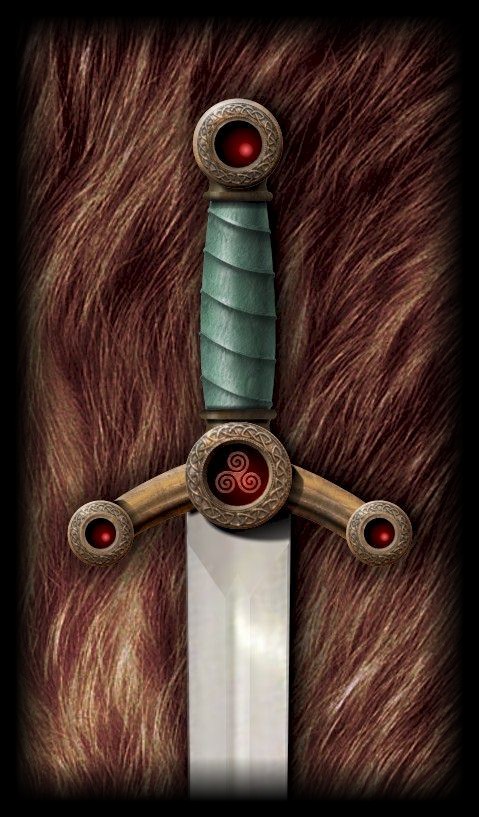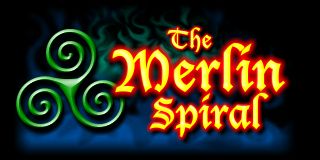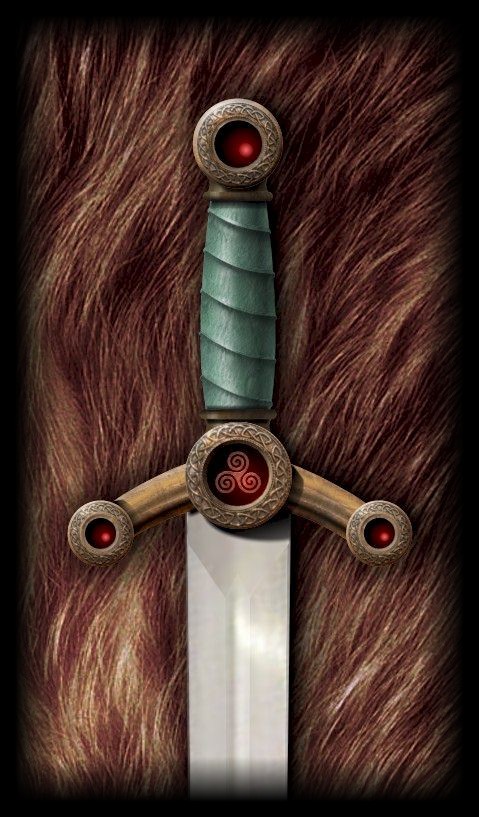New Excalibur Design!
I have finally finished my design for Excalibur!
Up to this point, I have been using for Excalibur a modified version of a dagger that I am going to smith for my daughter, Adele. And no, a longer version of a dagger doesn’t really make a good Excalibur. Not only did it have odd proportions, but it was not a proper iron-age sword.
An older version of Excalibur can be seen in my blog’s masthead (I need to replace it). I have based its design on two things:
- My research into swords of the era, particularly the Kirkburn sword, found in an iron-age grave, and
- My imagination!
In the following you will find a further explanation of my design, as well as an incredible close-up of the hilt, so keep reading!
The Kirkburn sword—from the 3rd century B.C.—can be seen by going to the following links:
- Simon James Web Page: He is an archaeologist at the University of Leicester, which is where my daughter is studying archeology.
- The British Museum
I would love to include an image here but I am pretty sure they are all copyrighted. This sword was found in 1987 and is just amazing! With over seventy components of iron, horn, glass enamel, and bronze, it is considered a sword of great complexity and artistic beauty.
Now, keep in mind that the Kirkburn sword was forged 700 years prior to the beginning of my book! Because of this I felt that I had some freedom to diverge from it and other designs, but still keeping some of its spirit.
Here are two other modern made swords that attempt an iron-age style:
- Iron Age Armoury – La Tene Sword
- Museum Replicas Excalibur. For a close-up image, click here.
One of my goals was to create a “fun” sword that would please fans, but could also be smithed without too much difficulty. I needed a sword that a man like King Arthur would be proud to wield. What I didn’t want was a “fantastical” sword that had a zero chance of fitting into the era.
So here is my hilt design. You will notice that I kept the three round glass enamel pieces from the Kirkburn sword’s guard, but made the guard wider and included some Celtic knotwork. Also, I made the pommel less gaudy than the Kirkburn sword, and also wrapped the handle in green dyed leather to make it more practical.

Now, I must say that this sword is probably the most detailed computer graphic I have put together.
Most interesting, you will notice the Spiral Triskelion design inside the center of the guard’s glass enamel inlay. This triskelion design is Celtic, and I have decided to use it as the “Spiral” logo for the entire series of books. Here is how it looks with my series title:

Why did I choose this design? Mainly because It has been used historically as a Christian symbol of the Trinity. Of course, others have procured it for their own purposes, but I see it as a fit symbol for (to borrow a phrase from Stephen Lawhead) the Swift Sure Hand’s involvement in the lives of the characters in my book series.
Another reason is that “Triskel” is very close to “Treskillard” (an old Cornish place-name), and although the two most definitely have different etymologies, the similarity is intriguing.
Thanks for taking a look at my designs!
BUT … since I wrote this blog post, I ACTUALLY MADE THIS BLADE! It’s not exactly as I designed it here, but it’s very similar. Click HERE to see it!
